 W
WThe history of Africa begins with the emergence of hominids, archaic humans and—at least 200,000 years ago—anatomically modern humans, in East Africa, and continues unbroken into the present as a patchwork of diverse and politically developing nation states. The earliest known recorded history arose in Ancient Egypt, and later in Nubia, the Sahel, the Maghreb and the Horn of Africa.
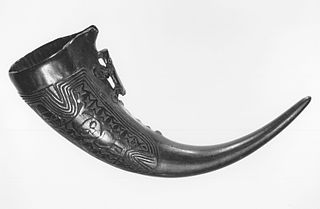 W
WOn display in the Art Institute of Chicago, in the African Art and Indian Art of the Americas, is a 19th-century drinking horn. Originally from the Kuba Kingdom, the drinking horn is made out of wood, iron, and copper alloy. Drinking horns were usually a gift to the friends and family of kings or given to a warrior.
 W
WAfrica Rising is a term coined to explain the rapid economic growth in Sub-Saharan Africa after 2000 and the inevitability of its continuation. The Financial Times defines Africa Rising as a "narrative that improved governance means the continent is almost predestined to enjoy a long period of mid-to-high single-digit economic growth, rising incomes and an emerging middle class." It has been particularly associated with the democratisation of African states since the end of the Cold War, comparative peace, greater availability of mobile phones and the Internet, and increase in African consumer spending as well as a growth in entrepreneurship. In the decade between 2005 and 2015, the economy of Africa as a whole increased by 50 per cent in contrast with a world average of 23 per cent.
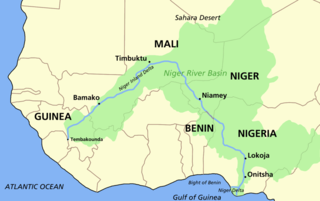 W
WThe Association for Promoting the Discovery of the Interior Parts of Africa, founded in London on 9 June 1788, was a British club dedicated to the exploration of West Africa, with the mission of discovering the origin and course of the Niger River and the location of Timbuktu, the "lost city" of gold. The formation of this group was effectively the "beginning of the age of African exploration".
 W
WAfrican historiography is a branch of historiography concerning the African continent, its peoples, nations and variety of written and non-written histories. It has differentiated itself from other continental areas of historiography due to its multidisciplinary nature, as Africa’s unique and varied methods of recording history have resulted in a lack of an established set of historical works documenting events before European colonialism. As such, African historiography has lent itself to contemporary methods of historiographical study and the incorporation of anthropological and sociological analysis.
 W
WBanque d'Afrique Occidentale : was a bank French colonial authorities established in 1901 in Dakar, Sénégal, as the central bank of the colonies of French West Africa.
 W
WBiffeche or Bifeche is an area of Senegal centred on the town of Savoigne, around 30 kilometres north-east of the major coastal city of Saint-Louis.
 W
WThe Cambridge History of Africa is an illustrated, eight-volume history of Africa published by Cambridge University Press between 1975 and 1986. Each volume is edited by a different person; the general editors of the series are John Donnelly Fage and Roland Oliver.
 W
WThe Cape to Cairo Railway was a project to create a railway line crossing Africa from south to north, it would have been the largest and most important railway of that continent. It was planned as a link between Cape Town in South Africa and Port Said in Egypt.
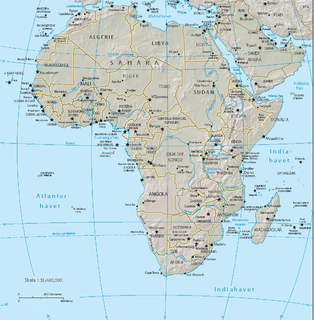 W
WCoronations in Africa are held, or have been held, in or amongst the following countries, regions and peoples:
 W
WThe decolonisation of Africa took place in the mid-to-late 1950s to 1975, with sudden and radical regime changes on the continent as colonial governments made the transition to independent states; this was often quite unorganized and marred with violence and political turmoil. There was widespread unrest, with organized revolts in both northern and sub-Saharan colonies including the Algerian War in French Algeria, the Angolan War of Independence in Portuguese Angola, the Congo Crisis in the Belgian Congo, and the Mau Mau Uprising in British Kenya.
 W
WDescription of Africa is a largely firsthand geographical book that was published under the title Della descrittione dell’Africa et delle cose notabili che ivi sono by Giovanni Battista Ramusio in his collection of travellers' accounts Delle navigationi e viaggi in Venice in 1550. It contained the first detailed descriptions published in Europe of the Barbary Coast and the gold-trading kingdoms of west-central Africa. The book was dictated in Italian by Leo Africanus, the famed Moorish traveler and merchant who had been captured by pirates and sold as a slave. Presented, along with his book, to Pope Leo X, he was baptized and freed. Leo, whose name he took in baptism, suggested that he recast his Arabic work in Italian; it was completed in 1526. It was republished repeatedly by Ramusio in his Delle navigationi e viaggi, translated into French and into Latin for the erudite, both in 1556.
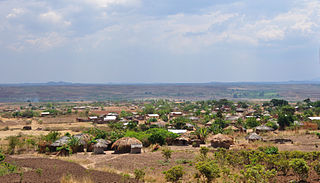 W
WThe earliest humans were hunter gatherers who were living in small, family groupings. Even then there was considerable trade that could cover long distances. Archaeologists have found that evidence of trade in luxury items like precious metals and shells across the entirety of the continent.
 W
WEthiopid is a historical racial classification of humans. By some, it was called Eastern Hamitic.
 W
WEurafrica, refers to the German idea of strategic partnership between Africa and Europe. In the decades before World War II, German supporters of European integration advocated a merger of African colonies as a first step towards a federal Europe. As a genuine political project, it played a crucial role in the early development of the European Union but was largely forgotten afterwards. In the context of a renewed EU Strategy for Africa, and controversies about a Euromediterranean Partnership, the term went through a sort of revival in the last years.
 W
WThe geography of North Africa has been reasonably well known among Europeans since classical antiquity in Greco-Roman geography. Northwest Africa was known as either Libya or Africa, while Egypt was considered part of Asia.
 W
WThe Fashoda Incident was the climax of imperial territorial disputes between Britain and France in East Africa, occurring in 1898. A French expedition to Fashoda on the White Nile river sought to gain control of the Upper Nile river basin and thereby exclude Britain from the Sudan. The French party and a British-Egyptian force met on friendly terms, but back in Europe, it became a war scare. The British held firm as both empires stood on the verge of war with heated rhetoric on both sides. Under heavy pressure, the French withdrew, ensuring Anglo-Egyptian control over the area. The status quo was recognised by an agreement between the two states acknowledging British control over Egypt, while France became the dominant power in Morocco. France had failed in its main goals.
 W
WFree French Africa is the political entity which collectively represents the colonial territories of France on African soil which rallied to Free France formed by General de Gaulle during the Second World War in order to continue the struggle against Nazi Germany and the Axis forces.
 W
WThe Isaaq genocide or Hargeisa Holocaust was the systematic, state-sponsored massacre of Isaaq civilians between 1987 and 1989 by the Somali Democratic Republic under the dictatorship of Siad Barre. The number of civilian deaths in this massacre is estimated to be between 50,000-100,000 according to various sources, whilst local reports estimate the total civilian deaths to be upwards of 200,000 Isaaq civilians. This genocide also included the levelling and complete destruction of the second and third largest cities in Somalia, Hargeisa and Burao respectively, and had caused up to 500,000 Somalis to flee their land and cross the border to Hartasheikh in Ethiopia as refugees, in what was described as "one of the fastest and largest forced movements of people recorded in Africa", and resulted in the creation of the world's largest refugee camp then (1988), with another 400,000 being displaced. The scale of destruction led to Hargeisa being known as the 'Dresden of Africa'. The killings happened during the Somali Civil War and have been referred to as a "forgotten genocide".
 W
WThe Ishango bone is a bone tool and possible mathematical object, dated to the Upper Paleolithic era. It is a dark brown length of bone, the fibula of a baboon, with a sharp piece of quartz affixed to one end, perhaps for engraving. It is thought by some to be a tally stick, as it has a series of what has been interpreted as tally marks carved in three columns running the length of the tool, though it has also been suggested that the scratches might have been to create a better grip on the handle or for some other non-mathematical reason. It has also been argued that the marks on the object are non-random and that it was likely a kind of counting tool and used to perform simple mathematical procedures.
 W
WKandake, kadake or kentake, often Latinised as Candace, was the Meroitic term for the sister of the king of Kush who, due to the matrilineal succession, would bear the next heir, making her a queen mother. She had her own court, probably acted as a landholder and held a prominent secular role as regent. Contemporary Greek and Roman sources treated it, incorrectly, as a name. The name Candace is derived from the way the word is used in the New Testament.
 W
WKhoekhoen are the traditionally nomadic pastoralist indigenous population of southwestern Africa. They are often grouped with the hunter-gatherer San peoples. The designation "Khoekhoe" is actually a kare or praise address, not an ethnic endonym, but it has been used in the literature as an ethnic term for Khoe-speaking peoples of Southern Africa, particularly pastoralist groups, such as the !Ora, !Gona, Nama, Xiri and ǂNūkhoe nations.
 W
WThe Kingdom of Kush was an ancient kingdom in Nubia, centered along the Nile Valley in what is now northern Sudan and southern Egypt.
 W
WThe Legends of Africa reflect a wide-ranging series of kings, queens, chiefs and other leaders from across the African continent including Mali, Benin, Ghana, Nigeria, Congo, Ethiopia, Eritrea and South Africa.
 W
WThe African Great Lakes kingdoms refers to the numerous historic kingdoms in the African Great Lakes region. These polities existed in the eighteenth and nineteenth centuries, and had similar and yet sometimes distinct cultures, values and traditions. The Great Lakes kingdoms were found in Southeast Africa and some parts of Central Africa, in what is present-day northwest Tanzania, south Uganda, some parts of Rwanda, and Eastern Congo.Bunyoro Buganda Bugisu Bukedi Burundi Busoga Buvinza Buyungu Buzinza Gisaka Heru Igara Ihangiro Karagwe Kimwani Kiziba Kyamutwara Kyania Lango Mpororo Mubari Muhambwe Nkore Ruguru Rusubi Rwanda Rwenzururu Sebei Teso Tooro
 W
WMassacres of Hutus during the First Congo War refers to the mass killing of Rwandan, Congolese, and Burundian Hutu men, women, and children in villages and refugee camps then hunted down while fleeing across the territory of Democratic Republic of Congo from October 1996 to May 1997.
 W
WThe Mediterranean Sea was the central superhighway of transport, trade and cultural exchange between diverse peoples encompassing three continents: Western Asia, North Africa, and Southern Europe. The history of the cultures and people of the Mediterranean Basin is important for understanding the origin and development of the Mesopotamian, Egyptian, Canaanite, Phoenician, Hebrew, Carthaginian, Greek, Persian, Illyrian, Thracian, Etruscan, Iberian, Roman, Byzantine, Bulgarian, Arab, Berber, Ottoman, Christian and Islamic cultures.
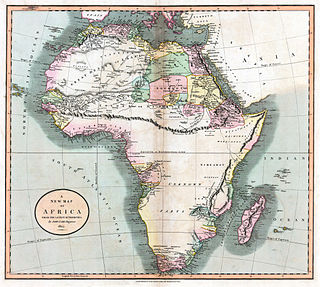 W
WThe Mountains of Kong were a non-existent mountain range charted on maps of Africa from 1798 through to the late 1880s. The mountains were once thought to begin in West Africa near the highland source of the Niger River close to Tembakounda in Guinea, then continue east to the legendary Central African Mountains of the Moon, thought to be where the White Nile had its source.
 W
WMountains of the Moon is an ancient term referring to a legendary mountain or mountain range in east Africa at the source of the Nile River. Various identifications have been made in modern times, the Rwenzori Mountains of Uganda and the Democratic Republic of the Congo being the most celebrated.
 W
WNegroland, or Nigritia, is an archaic term in European mapping, describing the inland and, by westerners, poorly explored region in West Africa as an area populated with negro people.
 W
WThe Ottoman Empire was founded at the beginning of the 14th century. Beginning in the 16th century, it also began acquiring possessions following series of wars in coastal North Africa.
 W
WThe role of France in the Rwandan genocide of 1994 has been a source of controversy and debate both within and beyond France and Rwanda. France actively supported the Hutu-led government of Juvénal Habyarimana against the Tutsi-dominated Rwandan Patriotic Front, which since 1990 had been engaged in a conflict intended to restore the rights of Rwandan Tutsis both within Rwanda and exiled in neighboring countries following over four decades of anti-Tutsi violence. France provided arms and military training to Habyarimana's youth militias, the Interahamwe and Impuzamugambi, which were among the government's primary means of operationalizing the genocide following the assassination of Juvénal Habyarimana and Cyprien Ntaryamira on April 6, 1994.
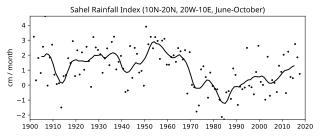 W
WThe Sahel has long experienced a series of historic droughts, dating back to at least the 17th century. The Sahel region is a climate zone sandwiched between the Sudanian Savanna to the south and the Sahara desert to the north, across West and Central Africa. While the frequency of drought in the region is thought to have increased from the end of the 19th century, three long droughts have had dramatic environmental and societal effects upon the Sahel nations. Famine followed severe droughts in the 1910s, the 1940s, and the 1960s, 1970s and 1980s, although a partial recovery occurred from 1975-80. The most recent drought occurred in 2012.
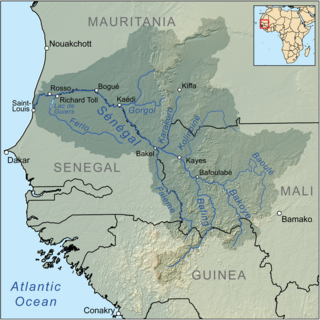 W
WA large-scale, drought-induced famine occurred in Africa's Sahel region and many parts of the neighboring Sénégal River Area from February to August 2010. It is one of many famines to have hit the region in recent times.
 W
WThe Sahelian kingdoms were a series of centralized kingdoms or empires that were centered on the Sahel, the area of grasslands south of the Sahara, from the 8th century to the 19th. The wealth of the states came from controlling the trade routes across the desert. Their power came from having large pack animals like camels and horses that were fast enough to keep a large empire under central control and were also useful in such kind of battle. All of these empires were also quite decentralized with member cities having a great deal of autonomy.
 W
WThe Sanhaja were once one of the largest Berber tribal confederations, along with the Zanata and Masmuda confederations. Many tribes in Morocco, Western Sahara and Mauritania bore and still carry this ethnonym, especially in its Berber form. Other names for the population include Zenaga, Znaga, Sanhája, Sanhâdja and Senhaja.
 W
WThe Scramble for Africa, also called the Partition of Africa or the Conquest of Africa, was the invasion, occupation, division, and colonisation of African territory by European powers during a short period known to historians as the New Imperialism. The 10 percent of Africa that was under formal European control in 1870 increased to almost 90 percent by 1914, with only Ethiopia (Abyssinia) and Liberia remaining independent. European motives included the desire to control valuable natural resources, rivalry and the quest for national prestige, and religious missionary zeal, although internal African politics also played a role.
 W
WThis is a list of shipwrecks located in or around the continent of Africa.
 W
WSlavery has historically been widespread in Africa. Systems of servitude and slavery were common in parts of Africa in ancient times, as they were in much of the rest of the ancient world. When the Arab slave trade and Atlantic slave trade began, many of the pre-existing local African slave systems began supplying captives for slave markets outside Africa.
 W
WSomali nationalism (Somali:Soomaalinimo) is centered on the notion that the Somali people share a common language, religion, culture and ethnicity, and as such constitute a nation unto themselves. The ideology's earliest manifestations are often traced back to the resistance movement led by Mohammed Abdullah Hassan's Dervish movement at the turn of the 20th century. In present-day Somaliland, the first Somali nationalist political organization to be formed was the Somali National League (SNL), established in 1935 in the former British Somaliland protectorate. In the country's northeastern, central and southern regions, the similarly-oriented Somali Youth Club (SYC) was founded in 1943 in Italian Somaliland, just prior to the trusteeship period. The SYC was later renamed the Somali Youth League (SYL) in 1947. It became the most influential political party in the early years of post-independence Somalia.
 W
WSomali studies is the scholarly term for research concerning Somalis and Greater Somalia. It consists of several disciplines such as anthropology, sociology, linguistics, historiography and archaeology. The field draws from old Somali chronicles, records and oral literature, in addition to written accounts and traditions about Somalis from explorers and geographers in the Horn of Africa and the Middle East. The Somali Studies International Association is the primary organization for Somalist scholars. Bildhaan, Somali Studies, Horn of Africa and the Anglo-Somali Society Journal likewise serve as the field's main periodicals. Since 1980, prominent Somalist scholars from around the world have also gathered annually to hold the International Congress of Somali Studies.
 W
WThe Songhai Empire was a state that dominated the western Sahel in the 15th and 16th century. At its peak, it was one of the largest states in African history. The state is known by its historiographical name, derived from its leading ethnic group and ruling elite, the Songhai. Sonni Ali established Gao as the capital of the empire, although a Songhai state had existed in and around Gao since the 11th century. Other important cities in the empire were Timbuktu and Djenné, conquered in 1468 and 1475 respectively, where urban-centered trade flourished and to the south is the north Akan state of Bonoman. Initially, the empire was ruled by the Sonni dynasty, but it was later replaced by the Askia dynasty (1493–1591).
 W
WThe Soninke people are a West African Mande ethnic group found in eastern Senegal and its capital Dakar, northwestern Mali and Fouta Djallon in Guinea, The Gambia and southern Mauritania. They speak the Soninke language, also called Maraka language, which is one of the Mande languages. Soninke people were the founders of the ancient empire of Ghana c. 750–1240 CE. Subgroups of Soninke include the Maraka and Wangara. When the Ghana empire was destroyed, the resulting diaspora brought Soninkes to Mali, Senegal, Mauritania, Gambia, Burkina Faso, Ghana, and Guinea-Bissau where some of this trading diaspora was called Wangara.
 W
WTado is a village in south east Togo, near the border with Benin.
 W
WThe Tarikh al-fattash is a West African chronicle written in Arabic in the second half of the 17th century. It provides an account of the Songhay Empire from the reign of Sonni Ali up to 1599 with a few references to events in the following century. The chronicle also mentions the earlier Mali Empire. It and the Tarikh al-Sudan, another 17th century chronicle giving a history of Songhay, are together known as the Timbuktu Chronicles.
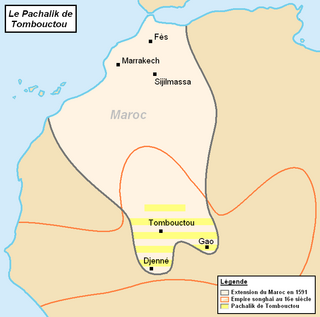 W
WThe Pashalik of Timbuktu was a West African political entity that existed between the 16th and the 19th century.
 W
WThe United States of Latin Africa was the proposed union of Romance-language-speaking Central African countries envisioned by Barthélémy Boganda. Boganda first called for it in May 1957.
 W
WWhite slavery refers to the chattel slavery of Europeans, whether by non-Europeans, or by other Europeans. Slaves of European origin were present in ancient Rome and the Ottoman Empire.